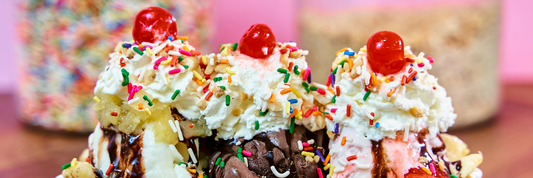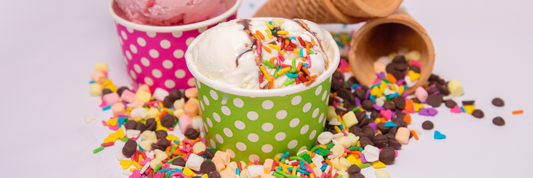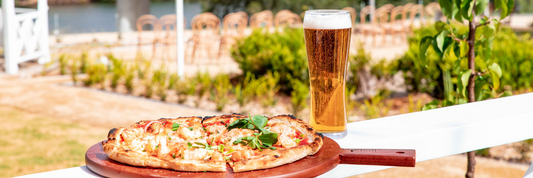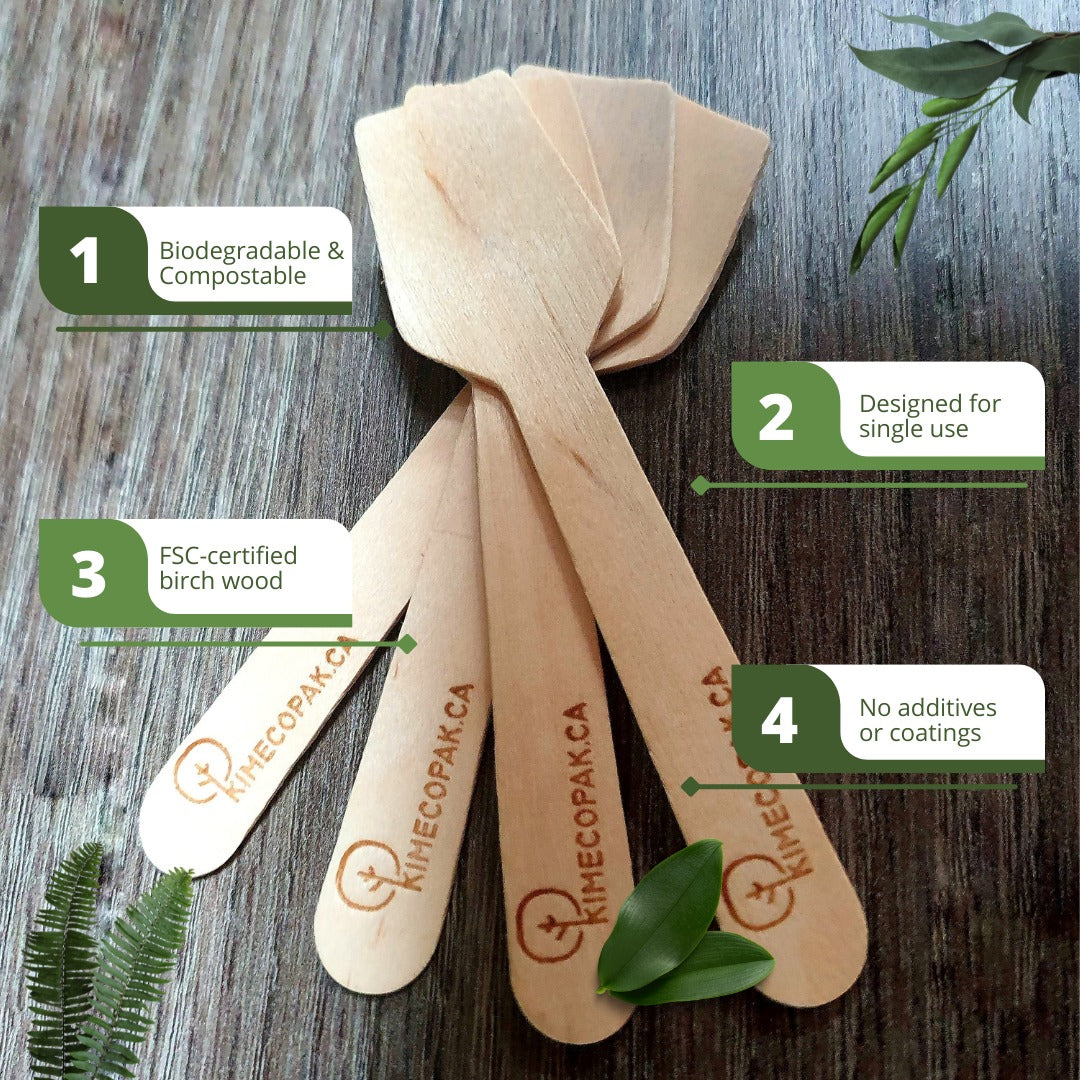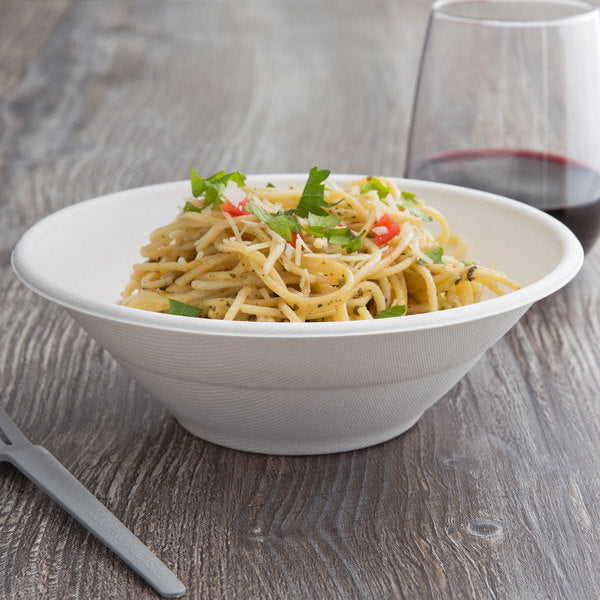Serving wine is an art that combines elegance, knowledge, and practicality. Whether you’re hosting a social event, working as restaurant staff, or simply enhancing your skills, mastering proper wine service ensures a superior experience for yourself and your guests. This guide will walk you through everything you need to know about serving wine, from preparation to presentation.
-
Styles of Wine – A Beginner-Friendly Guide to Explore Wine Varieties
-
Wine Tasting: A Complete Guide for Beginners and Enthusiasts
Why Proper Wine Service Matters

Enhancing Flavor and Aroma
Proper wine service is essential because it allows us to experience the full range of flavors and aromas in each glass. When wine is served at the right temperature in the correct glass, it significantly affects our perception of it. For instance, whites typically shine when chilled, while reds may taste dull if served too cold. Each wine has characteristics that can be accentuated by how it's served, giving the drinker a more profound appreciation of its unique qualities.
Elevating the Drinking Experience
Serving wine properly goes beyond the drink itself; it creates a memorable experience. Think of a fine dining restaurant where the staff present a wine in a manner that builds anticipation and excitement. The ambiance, the glass selection, and even the serving technique contribute to an experience that feels special and sophisticated. This thoughtful approach allows guests to enjoy wine in a way that is immersive, rather than merely a beverage to accompany their meal.
Showing Respect for the Wine
Wine is not just a drink; it is the product of years of hard work, dedication, and tradition from winemakers around the world. By serving wine properly, we pay homage to the effort that goes into crafting each bottle. Whether it's a cherished vintage or a new label, treating wine with the respect it deserves creates a connection between the drinker and the winemaker's journey.

Essential Tools for Serving Wine
The Right Corkscrew
A good corkscrew is essential for opening a bottle of wine without damaging the cork. There are several types available, including the traditional waiter's corkscrew, lever corkscrews, and electric ones. Each has its unique advantages.
- Waiter's Corkscrew: This compact tool is favored by many for its simplicity and effectiveness. To use it, insert the screw into the cork, twist, and leverage the arms to pull the cork out.
- Lever Corkscrew: Great for those who may struggle with manual corkscrews, this option uses a lever mechanism, making the process easier and requiring less strength.
- Electric Corkscrew: A modern choice for those who prefer a quick, effortless option, an electric corkscrew can be a real time-saver in larger gatherings.
Choosing the Perfect Wine Glasses
Understanding the Basic Shapes
Having the right glass is crucial for enjoying wine. Each type of wine has a designated glass shape that enhances its qualities:
- Red Wine Glasses: Typically wider with a large bowl, these glasses allow for aeration, which helps to release the wine’s aromas.
- White Wine Glasses: Usually narrower to keep the wine cooler and to direct the aromas to the nose.
- Sparkling Wine Flutes: Tall and slender, these glasses preserve the bubbles and highlight the wine's effervescence.
How Glass Shape Impacts Taste
The shape of the glass affects how we perceive flavors and aromas. For instance, a wider bowl allows for more oxidation, which can soften tannins in red wines, making them taste smoother. Meanwhile, a narrower rim channels the aromas more directly to your nose, enhancing your overall tasting experience.
Wine Serving Temperature Guide: Unlock the Perfect Flavor
Decanters and Aerators
When and Why to Decant Red Wine
Decanting involves pouring wine from its bottle into another vessel, allowing it to breathe. This process is especially beneficial for many red wines, as it can enhance flavors and soften harsh tannins. The general rule of thumb is to decant older wines—over 10 years—carefully to avoid disturbing the sediment. Young, bold reds can also benefit from this process, as it opens up their aromas.
Using an Aerator for Younger Wines
For those who don’t have the time to wait, an aerator is an efficient alternative to traditional decanting. By bubbling air through the wine as it's poured, aerators speed up the breathing process, allowing the drinker to enjoy the wine's best qualities right away.
Wine Coolers and Ice Buckets
Maintaining the right serving temperature is essential for enjoying wine. Wine coolers serve as a controlled environment to keep wines chilled, while ice buckets offer a quick solution for whites and sparkling wines. The correct temperature not only preserves the wine's integrity but also enhances flavors. A well-chilled white, for instance, will be refreshing, while a slightly warmer red can provide a more aromatic experience.
The Sommelier Knife (Waiter's Friend)
This versatile tool is a must-have for anyone serious about serving wine. The sommelier knife typically features a corkscrew, a small blade for cutting foil, and a lever for easy cork removal. Its compact design makes it convenient for both home use and professional environments, allowing the server to manage the entire opening process smoothly and efficiently.

Step-by-Step Guide to Serving Wine
Preparing the Bottle: Cleaning and presenting the bottle.
Begin by ensuring the wine bottle is clean and free from dust. Wipe the bottle's surface with a soft cloth or paper towel. This step not only enhances presentation but also ensures your guests have a pleasant first impression. If the bottle has been stored in a cooler or fridge, allow it to acclimate to room temperature for a few minutes before serving to maintain flavor integrity.
Opening the Wine Bottle:
Removing the Capsule: Cleanly and safely.
Using a knife or a specialized foil cutter, carefully slice around the top of the capsule, ensuring you make a clean cut. This prevents any jagged edges that could affect your pouring. The goal is not just to make it easy to open but also present the bottle nicely.
Extracting the Cork: Techniques to avoid breakage.
Using a corkscrew, insert the spiral into the center of the cork at a slight angle. Apply steady pressure while turning the handle to pull the cork out. For older bottles, a two-step corkscrew or an Ah-So can help gently extract fragile corks without breakage. Always have a cloth handy to grip the cork if it doesn’t come out smoothly.
Checking for Wine Faults: What to look and smell for.
Once the cork is removed, it’s essential to inspect the wine. Look for any cloudiness or unexpected sediment. A quick smell can reveal wet cardboard (indicative of cork taint) or vinegar notes (a sign of spoilage). If everything seems in order, you’re ready to proceed.
Decanting the Wine (If Necessary):
The proper technique for decanting.
If the wine is older or has sediment, decanting can enhance its flavors. To decant, slowly pour the wine into a decanter, leaving sediment behind in the bottle. A gentle pour is crucial here, making sure airflow enters the decanter to aerate the wine.
Using a light source to spot sediment in older wines.
Hold a light source underneath the bottle while pouring; this allows you to see any sediment and stop pouring when it reaches the neck, preventing unwanted particles in the decanter.
Serving at the Right Temperature:
General temperature guidelines for red, white, rosé, and sparkling wines.
Each wine type deserves its optimal serving temperature to fully express its flavors:
- Red Wines: Serve at 55-65°F (13-18°C).
- White Wines: Ideal at 45-55°F (7-13°C).
- Rosé Wines: Preferably at 45-55°F (7-13°C).
- Sparkling Wines: Chill to 40-50°F (4-10°C).
Creating a simple wine temperature chart
Keep a wine temperature chart handy to make these guidelines easier to remember. It can be a quick reference for a variety of wines and ensures your serving temperatures are spot on.
Pouring the Wine:
Pouring Etiquette: How much to pour and when to stop.
Aim to fill glasses to about one-third full. This allows for proper aeration and lets your guests appreciate the aroma. Always pour from the right side for a right-handed person; this is seen as courteous.
Pouring Techniques: Preventing drips and spills.
To avoid drips, tilt the bottle slightly while pouring and straighten it quickly to stop the flow. Practice this technique to avoid leaving stains on the tablecloth or your guests' outfits.
Offering Refills: Knowing when and how to offer more wine to guests.
As a general rule, monitor guest glasses discreetly, and offer a refill when a glass is about one-quarter full. Refill their glasses from the right and try to maintain eye contact to ensure it feels natural and considerate.

Serving Different Types of Wine
Serving Red Wine:
Ideal serving temperatures for light, medium, and full-bodied reds
Light-bodied reds, such as Pinot Noir, are best served slightly chilled at about 55°F (13°C). Medium-bodied wines like Merlot can be served at around 60°F (15°C). Full-bodied reds, such as Cabernet Sauvignon, are best enjoyed at about 65°F (18°C).
Specific tips for serving a vintage Cabernet Sauvignon
A vintage Cabernet Sauvignon should be opened at least one hour before serving. Consider decanting it to enhance its aromas and flavors. It’s a great option for a special occasion, allowing guests to savor its complexity.
Serving White Wine:
Ideal serving temperatures for dry, aromatic, and rich whites
Dry whites, such as Sauvignon Blanc, are best served at 45-50°F (7-10°C). Aromatic whites, like Riesling, should be served similarly. Richer whites, such as Chardonnay, benefit from a temperature of around 50-55°F (10-13°C).
The best way to serve a crisp Sauvignon Blanc on a hot day.
On a hot day, chill Sauvignon Blanc in ice water for around 20 minutes. This quick chill makes the wine refreshing, enhancing its zesty flavor profile, ideal for summer gatherings.
Serving Rosé Wine:
The optimal chill for rosé enjoyment.
Rosé wines should be served ice-cold, typically between 45-55°F (7-13°C). This chill enhances their fruity notes and refreshing qualities, making them perfect for warm weather.
Serving Sparkling Wine:
Best practices for chilling and opening without spillage.
Before serving, chill sparkling wines for several hours in the fridge or ice bucket. When opening, hold the cork and twist the bottle, allowing pressure to safely release—this minimizes any risk of spillage.
How to properly serve Champagne in different types of glasses.
Consider using flutes or tulip glasses for Champagne. This helps maintain carbonation for longer periods. Serve it at an angle when pouring to avoid overflowing and ensure a sophisticated experience.
The impressive technique of sabering sparkling wine (with a safety warning).
For a unique and dramatic experience, you can saber a bottle of sparkling wine. Using the blunt edge of a saber, slide it along the seam of the bottle while applying quick pressure to make the cork pop off. >Caution: Always prioritize safety. Know the risks associated with this technique, and ensure bystanders are safely distanced.
Wine Serving Etiquette for Hosts
Presenting the Wine to Guests: Sharing Information About the Wine
When serving wine, the presentation goes beyond simply pouring it into a glass. Begin by introducing the wine to your guests, providing them with context that enhances their experience. Mention where the wine is from, the grape variety, and any notable winemaking techniques that might intrigue them. For example, if you’re serving a robust Cabernet Sauvignon from Napa Valley, you might say, “This wine is from a family-owned vineyard in Napa, known for its sustainable farming practices and a rich blend of dark fruits and subtle oak.”
Offering a Taste Before Serving: Ensuring the Wine is to the Host's Liking
As a host, it’s courteous to taste the wine before serving it to your guests. This simple act allows you to ensure that the wine meets your standards and can serve as a conversation starter. Pour a small amount into your glass and savor it for a moment. If it meets your expectations, you can confidently share it with your guests. If not, it’s perfectly acceptable to choose an alternative. This level of attentiveness not only shows your appreciation for quality but also sets a standard for the evening.
Basic Principles of Wine and Food Pairing
Serving Order: Guidelines for Serving Different Wines During a Meal
The order in which you serve wine during a meal can greatly influence the dining experience. A common guideline is to start with lighter wines and progress to heavier varieties. For example:
- Start with a dry white wine or sparkling wine as an aperitif.
- Follow with a light red, such as Pinot Noir, as you move to the main course.
- Conclude with a fuller-bodied red or a dessert wine to complement the meal’s finale.
This progression not only enhances the flavors but also keeps the palate refreshed and engaged.
Respecting Guest Preferences: Offering Alternatives if Needed
It’s essential to be aware of your guests' preferences and dietary restrictions when serving wine. During the initial conversation, inquire if any of your guests have specific tastes or avoid particular types of wine. If someone prefers a sweeter wine, offer a Moscato or Riesling as an alternative. This attention to detail shows your guests that their comfort and enjoyment are important to you.
Common Mistakes to Avoid When Serving Wine
Serving at the Wrong Temperature: The Impact on Taste and Aroma
Temperature can drastically alter the enjoyment of wine. Reds are typically best served between 60-65°F (15-18°C), while whites and rosés shine at 45-55°F (7-13°C). A wine served too warm can taste flabby, while one that’s too cold may mask its flavors. Use a thermometer if necessary and remember that red wines can be chilled slightly, and white wines can sit out for a few minutes to reach their ideal serving temperature.
Using the Wrong Glassware: How It Affects the Sensory Experience
The glass you choose for serving wine significantly impacts the tasting experience. For example, a wide-bowled glass enhances the aroma of fuller red wines, allowing them to breathe, while a narrower glass is suitable for whites to preserve their crispness. Using inappropriate glassware not only diminishes the wine's scent and taste but can also appear careless in front of your guests.
Over-Pouring: Why Smaller Pours Are Often Better
Common etiquette suggests pouring about one-third of the glass full. This leaves enough space for the wine to breathe, allowing its aromas to develop. Moreover, smaller pours can help mitigate overconsumption and give guests the chance to sample a variety of wines throughout the evening. It’s a more thoughtful approach to wine service.
Mishandling the Cork: Avoiding Breakage and Potential Cork Taint
When opening a bottle of wine, be mindful of how you handle the cork. Use a proper corkscrew to prevent breakage and ensure a clean extraction, which helps avoid cork taint—an unpleasant musty flavor that can ruin the wine. If you encounter resistance, consider using a different method, like a two-prong remover, to keep the cork intact.
Conclusion
To provide an exceptional wine service, remember these key principles: present the wine thoughtfully, taste before serving, follow proper serving order, consider guest preferences, serve at the right temperature, use appropriate glassware, pour responsibly, and handle the cork with care.
Mastering the art of serving wine takes practice. Each gathering is an opportunity to refine your skills and create memorable experiences for your guests. Embrace the journey of learning and sharing your love of wine—it enhances not just the meal but the connections among those around you.
FAQ
What is the ideal temperature to serve most red wines?
Most red wines are best served between 60-65°F (15-18°C).
Do all wines benefit from being decanted?
While not all wines need decanting, many reds—especially bold and young vintages—benefit from this process as it allows the wine to aerate and enhances its flavors.
What is the difference between a wine aerator and a decanter?
A wine aerator is a device that introduces air into the wine quickly, while a decanter is a vessel where wine is stored to allow it to breathe over time, enhancing its bouquet.
How long should I chill white and sparkling wines before serving?
Generally, white and sparkling wines should be chilled for about 2 to 3 hours in the fridge or 20 to 30 minutes in an ice bucket before serving.


